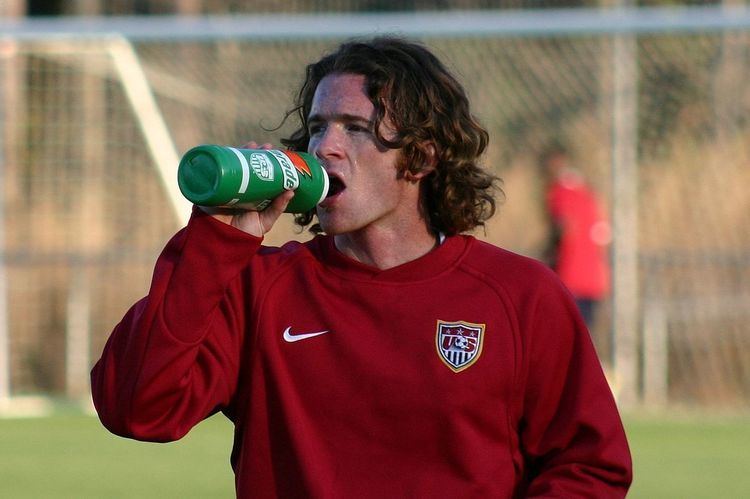 | ||
Cooling down (the prescribed event of which is called a cool down, cooldown, or cool-down; or warm down, in allusion to use in combination with warm up) is an easy exercise, done after a more intense activity, to allow the body to gradually transition to a resting or near-resting state. Depending on the intensity of the exercise, cooling down can involve a slow jog or walk. With lower intensities stretching can be used. Cooling down allows the heart rate to return to its resting rate. Anecdotally cooling down may reduce dizziness for professional or serious athletes and vocal performers after strenuous workouts. Studies are currently inconclusive as to whether the process actually reduces delayed-onset muscle soreness and muscle soreness not caused by lactate production during intense exercise. Some have shown a weak correlation: however, the majority of recent studies discount the relationship. One study has shown that athletes who perform an appropriate cool-down are less likely to become injured.
Contents
Procedure
Cool downs should involve the following steps to ensure an effective cool down. After exercise, a gradual yet continuous decrease in exercise intensity (i.e. from a hard run to an easy jog to a brisk walk) should be the first step in cooling down the body. Duration can vary for different people, but 3–7 minutes is considered adequate. Stretching, especially static stretching allows the muscles to be elongated and lengthened. This is the next step athletes should take to cool down. Rehydration is an essential part of the procedure and should be done either during stretching and light intensity or after these steps. Refuelling the body with electrolytes like water and sports drinks will keep the body hydrated.
Stretching
Stretching is a major factor in the procedure of cooling down. Stretching allows the bodies muscles to build elasticity and repair from aerobic and anaerobic exercise.
Static stretching is the appropriate form of stretching to aid in the cooling down procedure. It aids in decreasing the body’s temperature, removing lactic acid from the muscles and increasing flexibility. Each stretch should be held for a minimum of 10–20 seconds and stretched to the point of mild discomfort but not pain. Each muscle used in mid-high intensity exercise should then be stretched during the cool down.
Half-time cooling down
This is a popular process for elite sporting clubs and athletes. It involves using either ice vests, cooling products or manually cooling down the body through gentle light intensity exercise to cool down the body during half-time or breaks in an activity or sport. Half- time cooling down has proven to decrease body temperature and increase aerobic performance. Many sporting groups use cooling down jackets during half-time. Australian elite sporting teams such as those in the AFL, Olympic teams, military and elite athletes across all sporting fields use cooling down vests to increase performance and gain a competitive advantage over their competition.
Cardiovascular Issues, Health, and Heart rate
During aerobic exercise, peripheral veins, particularly those within a muscle, dilate to accommodate the increased blood flow through exercising muscle. The skeletal-muscle pump assists in returning blood to the heart and maintaining cardiac output. A sudden cessation of strenuous exercise may cause blood to pool in peripheral dilated veins which may cause varicose veins. A cool-down period allows a more gradual return to venous tone. The heart will also need to beat faster to adequately oxygenate the body and maintain blood pressure.
It is theorised that individuals predisposed to, suffering from, or at risk for cardiovascular disease may be at risk for potential negative cardiovascular outcomes if a cool down is not completed following exercise bouts due to a rapid decrease in blood reaching areas of the heart (with narrowed blood vessels due to present cardiovascular disease). This, however, is only a theory, and clinical evidence for this is currently lacking.
Muscular and skeletal injuries have also been found to increase when the cool down procedure is neglected. Ankle injuries are one of the most common injuries athletes and participants are at risk of obtaining when the cool down is performed ineffectively or not at all. Injuries are decreased significantly when the cool down is performed for an adequate amount of time compared to only a short period of time.
